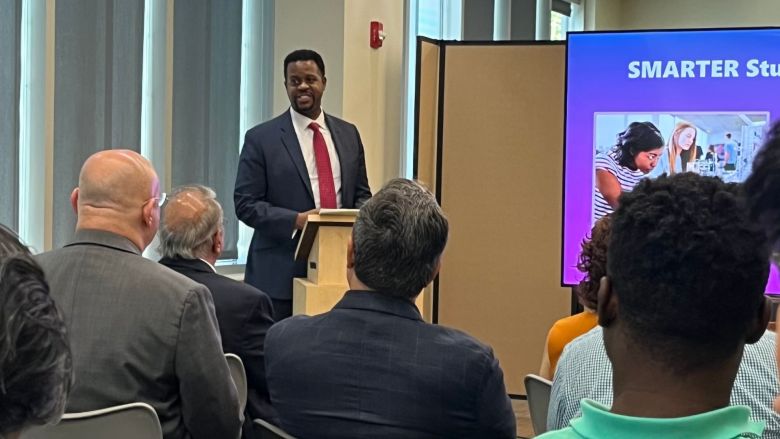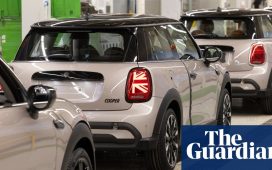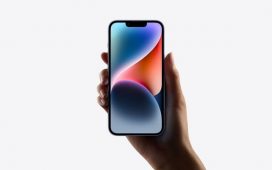By Megan Sayles
AFRO Business Writer
msayles@afro.com
Researchers from the U.S. Department of Transportation (DOT) visited Morgan State University’s (MSU) National Transportation Center (NTC) on May 2 to learn more about the hub’s ongoing innovations in transportation and technology.
Officials toured research labs and observed student-led projects, including an autonomous wheelchair and smart intersection technology.
“As the lead institution, we’re expecting a lot from as it relates to safety, mobility and equity in this region,” said Robert Hampshire, deputy assistant secretary for research and technology for the U.S. DOT. “You all have already stepped up to the plate.”
In 2023, the U.S. DOT awarded MSU a $15-million grant over five years to establish the Sustainable Mobility and Accessibility Regional Transportation Equity Research (SMARTER) Center, which is housed in the school’s NTC. The center’s purpose is to conduct research through an equity lens to enhance the mobility of people and goods in the Mid-Atlantic region.
MSU is the first historically Black college or university (HBCU) to lead a regional U.S. DOT transportation center.
Hampshire shared that the top priority of the federal transportation department is to save lives. Last year, more than 42,000 people died on roadways across the country. He said MSU’s research could help to prevent future fatalities.

“Some of the technology that this center is working on, be it connected vehicle technology, vehicle sensing technology or the design of our roadways could help mitigate this. We could have one more person alive” said Hampshire. “That’s the standard that we’re looking for.”
MSU currently has two smart intersections on its campus, which the U.S. DOT visited during a ride-along demonstration. They’re situated at Hillen Road and Cold Spring Lane and at Hillen Road and 33rd Street. In order to make streets safer and more efficient, the intersections employ Light Detection and Ranging (LiDAR) and Vehicle-to-Everything technology (V2X).
The former uses lasers to scan environments, ultimately creating maps of terrain and movements in the intersection. The latter enables vehicles to communicate with other vehicles, roadside infrastructure and pedestrians.
The intersections are a part of a testbed in the SMARTER Center and are used to conduct research on Connected and Autonomous Vehicle (CAV) technology, a subset of V2X.
“By processing the data and using machine learning and artificial intelligence processes, we can get valuable information. We can get counts on cars, trucks, buses, pedestrians and bicycles that cross the intersection,” said Al Taher, third-year Ph.D. student at MSU. “We can also get the near-miss events, which are conflicts between vehicles or a vehicle and a non-vehicle.

“By analyzing this information, we can propose countermeasures to enhance safety, especially for vulnerable road users like pedestrians and cyclists.”
U.S. DOT officials also witnessed a demonstration of an autonomous wheelchair from second-year Ph.D. student David Nyarko and junior Derrick Cook. In its current phase, the wheelchair uses sensors to scan a track of QR codes that allow it to orient itself before determining where to move next.
The wheelchair is being tested at Baltimore/Washington International Thurgood Marshall Airport. With it, wheelchair users will be able to travel through the airport without an escort.
“The future step is going trackless where the wheelchair is able to make a map of any location it’s going to operate in. It will be able to move from point A to point B without any marking on the floor,” said Nyarko. “Just as we humans do, the wheelchair will know the map of the airport and be able to navigate from gate to terminal.”
Megan Sayles is a Report for America corps member.










